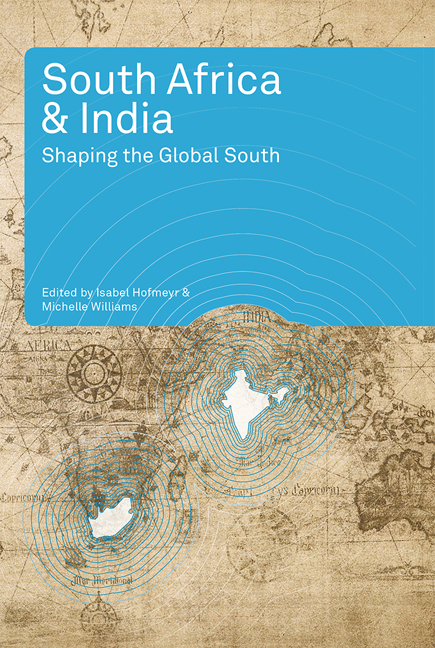South Africa–India: Historical Connections, Cultural Circulations and Socio-political Comparisons
from Introduction
Published online by Cambridge University Press: 21 April 2018
Summary
Pick up any South African newspaper or tune in to any broadcast programme and before long one is likely to come across an item on India. Whether an advertisement for a particular model of Tata or Mahindra motor car, or a report on the growing trade and investment links between the two countries, each day brings mounting evidence of the marked intensification of relations between South Africa and India.
This Indian presence in the South African media may seem unremarkable. As a rising world economic power, India probably currently features more in most international media than it used to. South Africa has one of the largest Indian diasporic populations and one may hence expect India-related stories. However, the Indian presence in the South African media is noteworthy in two respects: firstly, the reporting on India appears in the mainstream media rather than those aimed specifically at South African Indian communities and, secondly, the discussion of India in the South African media tends to explore the economic synergies that exist between the two countries rather than discussing India's rise in general.
This focus on these new economic possibilities in turn forms part of a series of state and public policies that specifically seek to bolster South Africa–India interactions. Prior to South Africa's political transition in 1994, there were no formal economic ties between the two countries. In 2008/2009 total trade amounted to over US$4 billion. Since 2001 it has grown at a phenomenal rate of 22 per cent per annum, and the two governments set a target of US$10 billion in trade by 2010. Investment has grown almost as rapidly, and today there are at least 50 major corporations from each country operating in the other, and as many as 20 or 25 others exploring the possibility of investing from one to the other. Both states are committed to increasing these figures by making use of their growing number of bilateral agreements and the trilateral possibilities opened up by the India–Brazil– South Africa initiative (commonly know as IBSA). Growth in commercial ties has seen the establishment of bilateral business associations and similar bodies, but has also stimulated the expansion of linkages in other social arenas beyond the market.
- Type
- Chapter
- Information
- South Africa and IndiaShaping the Global South, pp. 2 - 20Publisher: Wits University PressPrint publication year: 2011

